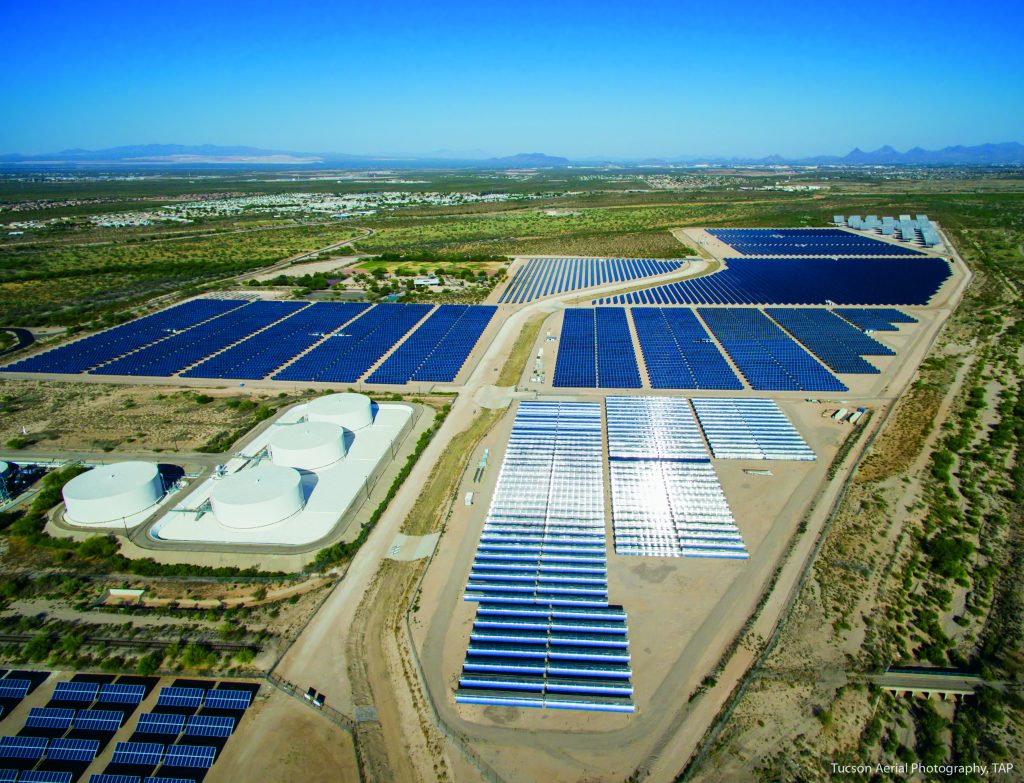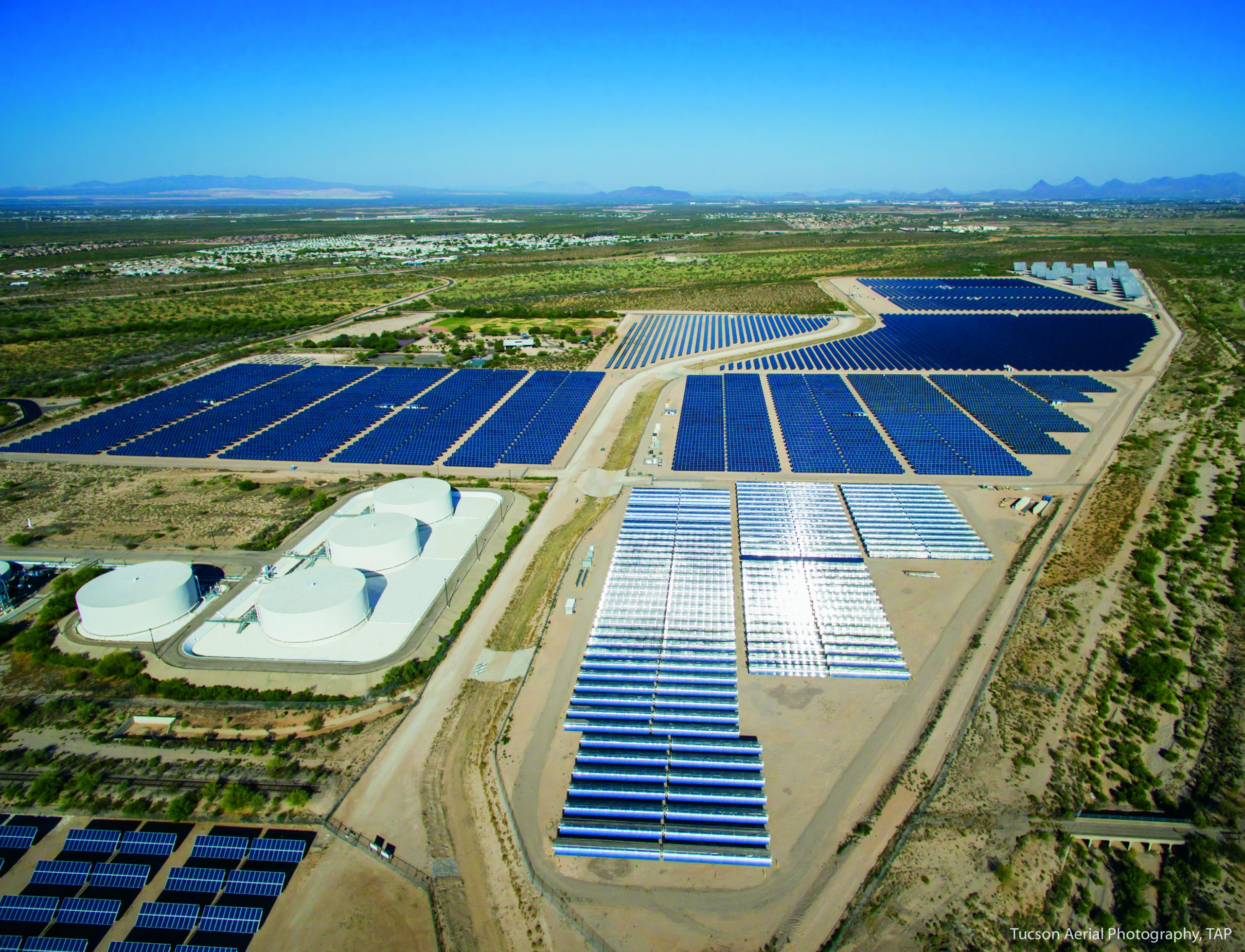Solar Zone: No place like it under the Arizona sun

Writing By Tech Parks Arizona
Power generation and distribution are critical parts of our society. However, society has realized that we need to move away from fossil fuel power plants and into using clean energy to generate electricity. That is why The University of Arizona Tech Park developed the Solar Zone.
The Solar Zone creates an integrated, multi-dimensional research center that fosters all elements of solar energy development including generation and distribution, research and development, assembly and manufacturing, product development, testing and evaluation, workforce development, and public education and demonstration.
To successfully compete with coal and oil-based energy and become a larger part of the overall energy mix, solar energy must become more efficient, consistent and less costly.

The University of Arizona’s Tech Park advances the next generation of solar energy innovation with the unique testing and demonstration capabilities of the Solar Zone.
Just four years from its inception, Tech Parks Arizona celebrated the completion of Phase One of the Solar Zone at the UA Tech Park. The Solar Zone, a public-private partnership between the university and Tucson Electric Power, is one of the largest multi-technology solar testing and demonstration sites in the world.
Representing the first milestone in the program, 10 companies and organizations are participating in Phase One, testing and demonstrating a variety of solar technologies and systems. The site is designed to generate 25 megawatts of power, which is nearly twice the daily electrical consumption of the Tech Park and enough to power the homes of more than 4,600 TEP residential customers for a year. Each Solar Zone tenant has a 20-year agreement with TEP whereby the utility uses all solar power generated by the Solar Zone — which is fed directly into the grid — to expand its renewable energy resources in Southern Arizona.
The sun shines at “optimal radiance” approximately 85 percent of the year in Tucson, allowing solar technologies to be tested effectively and thoroughly year-round. The Solar Zone provides researchers with invaluable data and the ability to evaluate various technologies as they perform side by side. Testing under identical operating conditions allows developers to determine when systems are most efficient and economical. University researchers are testing everything from solar power forecasting to the environmental impact of solar energy installations.
Phase Two of the Solar Zone includes expanding research and development activities to focus on energy storage, grid optimization and micro grids, distributed solar systems, and integrated and embedded solar materials. As part of Phase Two, the UA Tech Park opened an additional 29 acres of land for testing and demonstration projects.
Energy storage is a primary focus. The primary advantage of a storage system in the context of a large utility is often in its ability to very rapidly change power output levels, much faster than the proportional governor response rate of any conventional generation system. First generation solar energy storage projects can balance out fast-changing demands on the grid-level systems (i.e., weather-related events).
The first project of Phase Two is an innovative energy storage systems. E.ON developed a 10-megwatt lithium titanate oxide (LTO) storage facility and accompanying 2-megawatt solar array on contract for Tucson Electric Power.
Phase Two also includes plans for a public information and visitor plaza. This educational center will allow visitors to get up close to functional solar systems, and learn about solar technology and its application. Public education about green technologies and the importance of sustainable energy is one of the goals of the UA Tech Park and Solar Zone, which makes the visitors center an integral part of the university’s educational outreach.
Tech Parks Arizona continues to strive to achieve all of the above, creating a bridge between academia and industry through green technology innovations. The ability for many technologies to be tested and evaluated at the Solar Zone has allowed participating companies to access, modify, and improve the efficiency and potential impact of renewable energy.
